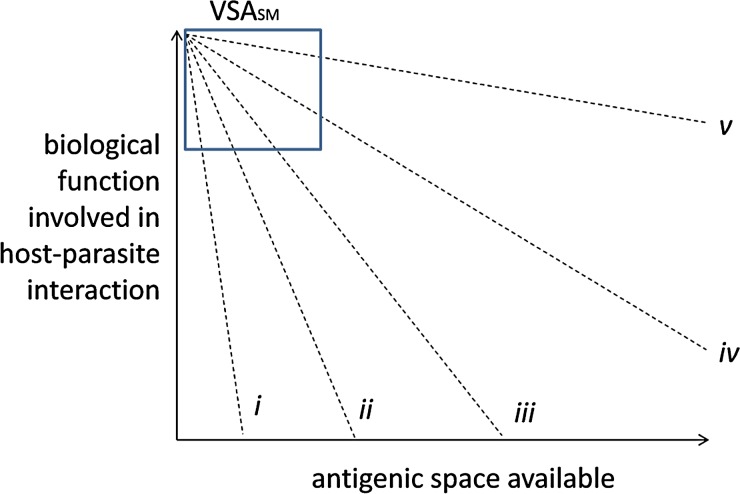Fig. 1.
Hypothetical trade-offs between function and antigenic novelty. This figure shows an immunological version of the principle of functional constraint focusing on efficiency of biological functions associated with the host–parasite interaction (y-axis) and the hypothetical antigenic space within which those functions exist (x-axis). Optimal function can only be performed by a narrow range of molecular structures which translates, in the simplest case, to a small antigenic space. Key to virulence is not simply the function itself, but the ability of molecules or systems of molecules to uncouple immunogenicity from function to expand the antigenic space available. Hypothetical lines are drawn to suggest trade-offs between function and antigenic space in for: (i) Measles haemagglutinin (Frank and Bush, 2007), (ii) var2CSA, (iii) group A and DC8 PfEMP1 (Buckee and Recker, 2012), (iv) group B and C PfEMP1, (vi) HIV gp120 (de Boer and Boerlijst, 1994). Following from this hypothetical trade-off, parasites with high levels of recognition by antibodies commonly carried by children have been proposed to express PfEMP1 variants with strong cytoadhesive function and exist within a small restricted immunological space. Such hypothetical variants have been called: agglutination frequency high (AFH (Bull et al. 2000) VSA with a high frequency of recognition [VSAFoRH (Bull et al. 2005b)], and VSA associated with severe malaria [VSASM (Nielsen et al. 2002; Jensen et al. 2004)]. Their position within the graph is indicated with a box

